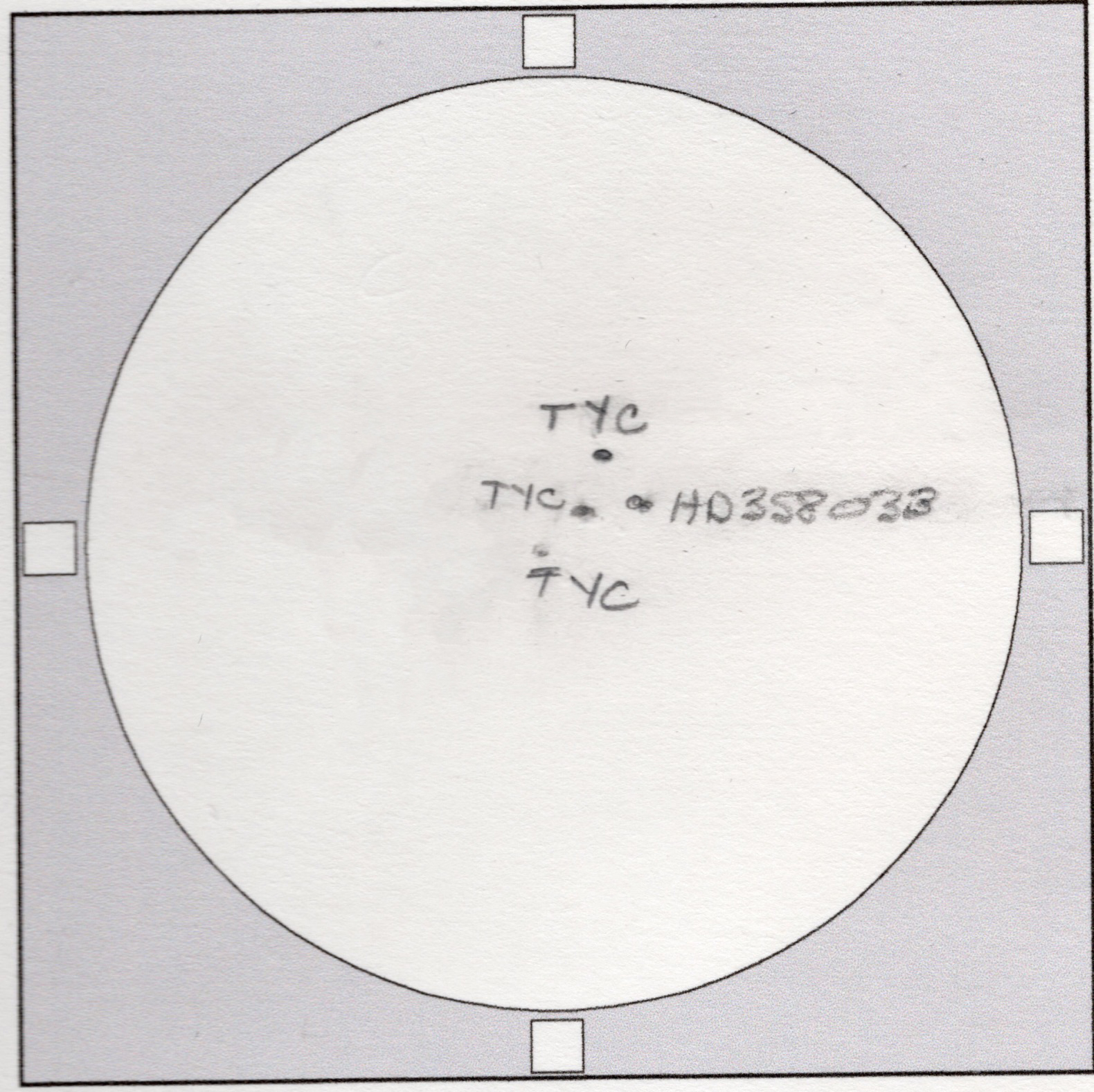Location: St. Croix Observatory (SCO)
Date: 2024-09-29
Time: 9:12 PM ADT
S&T Chart Reference: 66, 77
Equipment: 10" Meade SCT
Eyepieces: SvBony 10-30mm Zoom eyepiece (used 30mm)
Magnification: x83
Seeing: Excellent (1)
Transparency: Good (3)
| Time | SQM | Temp |
| 10:37 PM | 21.14 | 10° C |
This session began earlier in the evening but clouds broke the observing session into segments. In this case, cloud interference meant I could not sketch the star field.
I found these four stars above θ Capricornus and nearer to ν Aquarii; it was west of M72 (that I could not find during this session). I was a little surprised they were included in the Messier list. With so few stars visible, it did not appear as one of Messier's 'traditional' clusters. There was no nebulosity around them and no other discernible stars. I did not have time to notice a colour difference before the clouds came in but did not there was a slight difference in their magnitude.
 |
Constellation: Aquarius Type: Open Cluster / Asterism Apparent Magnitude: 8.9 Mean Distance: 2.0 kly |
Some background on M73:
M73 was discovered by Charles Messier on the night of October 4/5, 1780. In his notes he wrote: “Cluster of three or four small stars, which resembles a nebula at first sight, containing a little nebulosity: this cluster is situated on the same parallel as the preceding nebula: its position was determined from the same star Nu Aquarii.”
Although many shake their heads at Messier’s log of four stars, other historical astronomers continue to follow suit and observe it. On September 28, 1783, Sir William Herschel notes: “Consists of a few stars arranged in triangular form. No nebulosity among them.” Later, his son John would catalog this same “nothing” group as GC 4617, noting that they were a “Cluster ??; extremely poor; very little compressed; no nebulosity.” If that were not enough, even Emil Dreyer would catalog them as NGC 6994!
In 2000-2002 several astronomers conducted an analysis of the colours and luminosity of stars in and around M73, and concluded it was an open cluster as seen in a Hertsprung-Russell Diagram. The controversy was resolved in 2002, when M. Odenkirchen and C. Soubiran published an analysis of the high resolution spectra of the six brightest stars within 6 ′ of the centre point. They demonstrated that the distances from the Earth to the six stars were very different from each other, and the stars were moving in different directions. Therefore, they concluded that the stars were only an asterism.
In my observation, I noted a slight difference in the stars' magnitudes. Online, I learned they had apparent magnitudes of 10.48, 11.32, 11.90 and 11.94 (according to GAIA EDR3).